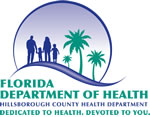Quarterly Update
As of: April 15, 2011
Copies of the 2011 yearly reminder letter are available on-line at eBridge link. https://s1.ebridge-solutions.com/ebridge/3.0/default.aspx
Beginning May 1, 2011, water systems who are currently required to employ certified operators for their water treatment plants and have multiple service connections must also have a water distribution operator (who can be your current water plant operator) on site
during any activities that may affect water quality or quantity, such as water main breaks and repairs. You may also have one of your own staff take the
distribution training and test to become a distribution operator. See below for more information
Please contact us within 24 hours when you receive a positive distribution or raw water bacteriological sample to ensure you are
taking the correct number of repeat distribution samples and triggered raw water samples as required by the Groundwater Rule.
There new public notice requirements under the Groundwater Rule for bacteriological samples and deficiencies that go uncorrected from your sanitary surveys. Refer to our training modules on this page for more information.
There are new reporting requirements for Lead and Copper Tap Sampling. All persons served by the water systems must be notified of the sampling results within 30 days after you learn of the results. This public notice is required even if all the results are below the detection level. Within 3 months of the end of a monitoring period you are required to
submit a copy of the notice along with DEP Form 62-444.999(16) to our office.
Results from any 1st quarter sampling are due in our office by April 10.
Consumer Confidence Reports are due to your consumers and our office by July 1, 2011. The newest template is available at the Florida Rural Water Associations website www.frwa.net.
We will not be reviewing the reports this year. Please contact us if you need any monitoring results or information on any violations that may need to be reported in your report.
Invoicing for the 2011-2010 annual licenses will be sent out in May of this year and must be paid within 45 days or a $50 late fee may be added to your invoice.
Needing Assistance?
Need help with completing lead and copper plans, disinfectant by product or bacteriological sampling plans?
Unsure of how to take a bacteriological sample or don't understand the new rule?
Please contact Therese LaDouceur
for an appointment. Environmental Health is happy to provide on-site assistance at your convenience.
If you have any suggestions or requests please Contact Us by Email or call us at 813-307-8000 ext. 5934
------------------------------------------------------------
Electronic Records
We are currently converting all our paper files to electronic copies that
will be available on-line. The system is called eBridge and it allows you to view and print as needed. ebridge instructions are provided for your convenience.
Files Scanned to eBridge (Effective May 1, 2011) 
----------------------------------------------------------
EHS Permitting Fees (Effective February 2011) 
List of Compliance and Enforcement Personnel 
Become a Certified Operator
of your own Water System
Visit the Operator Certification Program web site or call 850-245-7500.
Contact the Florida Rural Water Association or 850-668-2746 for training courses.
Cross Connection Control Program
Plumbing cross-connections, which are defined as actual or potential connections between a potable and non-potable water supply, constitute a serious public health hazard. There are numerous, well-documented cases where cross-connections have been responsible for contamination of drinking water, and have resulted in the spread of disease.
All community water systems are required to have a cross connection control program.
For information concerning Cross Connection Control, visit the Environmental Protection Agency web site or to download their manual.
More Cross Connection Control Information:
Protecting your Water Against Contamination 
Backflow Prevention and Cross-Connection Control 
|


